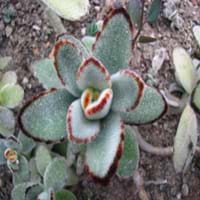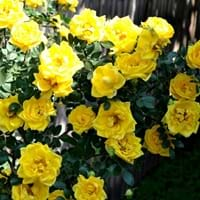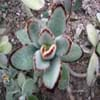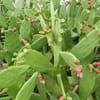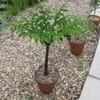Life Span
Perennial
Perennial
Type
Perennial, Shrubs
Perennial
Origin
Madagascar, Not Available
Eastern Europe, Western Asia
Types
Not Available
Rosa Harisons Yellow, Rosa Persica
Habitat
Hot climate regions, Temperate Regions
gardens, Pastures, Prairies, Terrestrial, Tropical regions
USDA Hardiness Zone
Not Available
3-8
AHS Heat Zone
Not Available
10-1
Sunset Zone
Not Available
1a, 1b, 2a, 2b, 3a, 3b, 4, 5, 6, 7, 8, 9, 10, 11, 12, 13, 14, 15, 16, 17, 18, 19, 20, 21, 22, 23, 24
Habit
Not Available
Oval or Rounded
Flower Color
Yellow green
Yellow
Flower Color Modifier
Not Available
Not Available
Fruit Color
Not Applicable
Non Fruiting Plant
Leaf Color in Spring
White hair and some brown spots on margins and at tips
Not Available
Leaf Color in Summer
Not Available
Not Available
Leaf Color in Fall
Not Available
Not Available
Leaf Color in Winter
Not Available
Light Green
Leaf Shape
Small oblong
Pinnate
Plant Season
Spring
Summer, Fall
Sunlight
Full Sun
Full Sun, Partial Sun
Growth Rate
Not Available
Fast
Type of Soil
Sandy, Well drained
Loam, Sand
The pH of Soil
Neutral, Slightly Acidic, Slightly Alkaline
Acidic, Neutral
Soil Drainage
Not Available
Well drained
Bloom Time
Summer
Early Summer, Summer, Late Summer, Early Fall
Repeat Bloomer
Not Available
Yes
Tolerances
Not Available
Drought
Where to Plant?
Container, Ground, Pot
Ground, Pot
How to Plant?
Leaf Cutting, Rooted stem cutting
Grafting, Stem Planting, Transplanting
Plant Maintenance
Medium
Medium
Watering Requirements
Average Water Needs, Medium, Water less during winter, Water more in summer
Form a Soil ring to water efficiently, Requires regular watering, Water twice a day in the initial period, Water when soil is dry
In Summer
Lots of watering
Lots of watering
In Spring
Moderate
Moderate
In Winter
Average Water
Average Water
Soil pH
Not Available
Acidic, Neutral
Soil Type
Not Available
Loam, Sand
Soil Drainage Capacity
Not Available
Well drained
Sun Exposure
Not Available
Full Sun, Partial Sun
Pruning
Remove damaged leaves, Remove dead branches, Remove dead leaves
Prune if you want to improve plant shape, Remove damaged leaves, Remove dead leaves, Remove deadheads, Shape and thin as needed
Fertilizers
All-Purpose Liquid Fertilizer
All-Purpose Liquid Fertilizer, organic fertlizers
Pests and Diseases
Red blotch
Aphids, Bacterial Diseases, Mites, Slugs
Plant Tolerance
Not Available
Drought
Flower Petal Number
Not Available
Not Available
Showy Fruit
Not Available
Yes
Edible Fruit
Not Available
Not Available
Fragrant Flower
Not Available
Yes
Fragrant Fruit
Not Available
No
Fragrant Leaf
Not Available
No
Fragrant Bark/Stem
Not Available
No
Showy Foliage
Not Available
No
Showy Bark
Not Available
No
Foliage Texture
Bold
Not Available
Foliage Sheen
Not Available
Not Available
Invasive
Not Available
No
Self-Sowing
Not Available
No
Attracts
Butterflies, Mosquitos
Not Available
Allergy
Not Available
no allergic reactions
Aesthetic Uses
Showy Purposes
Beautification, Bouquets
Beauty Benefits
Skin Problems
Not Available
Environmental Uses
Air purification
Air purification
Medicinal Uses
Arthritis, Chest pain, Ear ache, Fever, Headache, Laxative, Leprosy, Small pox, Stomach spasms, Strengthen gums, Treating fever, Wounds
No Medicinal Use
Part of Plant Used
Leaves
Flowers
Other Uses
Used As Food, Used for its medicinal properties
Showy Purposes, Used as Ornamental plant
Used As Indoor Plant
Yes
No
Used As Outdoor Plant
Yes
Yes
Garden Design
Not Available
Container, Cutflower, Feature Plant, Foundation, Mixed Border
Botanical Name
KALANCHOE
Rosa foetida
Common Name
Kalanchoe Panda Plant, Panda Plant, Pussy Ears, Chocolate Soldier, Cocoon Plant, Velvet Leaf Kalanchoe, Plush Plant, White Lady, Panda-Bear Plant, Kalanchoe
Austrian briar, Persian yellow rose, Austrian copper rose
In Hindi
पांडा संयंत्र
Persian Yellow Rose
In German
Panda -Anlage
Persian Yellow Rose
In French
installation de Panda
Persian Yellow Rose
In Spanish
planta de Panda
Persian Yellow Rose
In Greek
φυτό Panda
Persian Yellow Rose
In Portuguese
planta Panda
Persian Yellow Rose
In Polish
Panda roślin
Persian Yellow Rose
In Latin
Panda herba
Persian Yellow Rose
Phylum
Vascular plant
Not Available
Class
Magnoliopsida
Not Available
Order
Saxifragales
Rosales
Family
Crassulaceae
Rosaceae
Genus
Widow's-thrill
Rosa
Clade
Angiosperms, Core eudicots, Eudicots
Angiosperms, Eudicots, Rosids
Tribe
Kalanchoeae
Not Available
Subfamily
Sedoideae
Rosoideae
Number of Species
Not Available
Season and Care of Panda Plant and Persian Yellow Rose
Season and care of Panda Plant and Persian Yellow Rose is important to know. While considering everything about Panda Plant and Persian Yellow Rose Care, growing season is an essential factor. Panda Plant season is Spring and Persian Yellow Rose season is Spring. The type of soil for Panda Plant is Sandy, Well drained and for Persian Yellow Rose is Loam, Sand while the PH of soil for Panda Plant is Neutral, Slightly Acidic, Slightly Alkaline and for Persian Yellow Rose is Acidic, Neutral.
Panda Plant and Persian Yellow Rose Physical Information
Panda Plant and Persian Yellow Rose physical information is very important for comparison. Panda Plant height is 45.00 cm and width 25.00 cm whereas Persian Yellow Rose height is 70.00 cm and width 100.00 cm. The color specification of Panda Plant and Persian Yellow Rose are as follows:
Panda Plant flower color: Yellow green
Panda Plant leaf color: White hair and some brown spots on margins and at tips
Persian Yellow Rose flower color: Yellow
- Persian Yellow Rose leaf color: Not Available
Care of Panda Plant and Persian Yellow Rose
Care of Panda Plant and Persian Yellow Rose include pruning, fertilizers, watering etc. Panda Plant pruning is done Remove damaged leaves, Remove dead branches and Remove dead leaves and Persian Yellow Rose pruning is done Prune if you want to improve plant shape, Remove damaged leaves, Remove dead leaves, Remove deadheads and Shape and thin as needed. In summer Panda Plant needs Lots of watering and in winter, it needs Average Water. Whereas, in summer Persian Yellow Rose needs Lots of watering and in winter, it needs Average Water.
